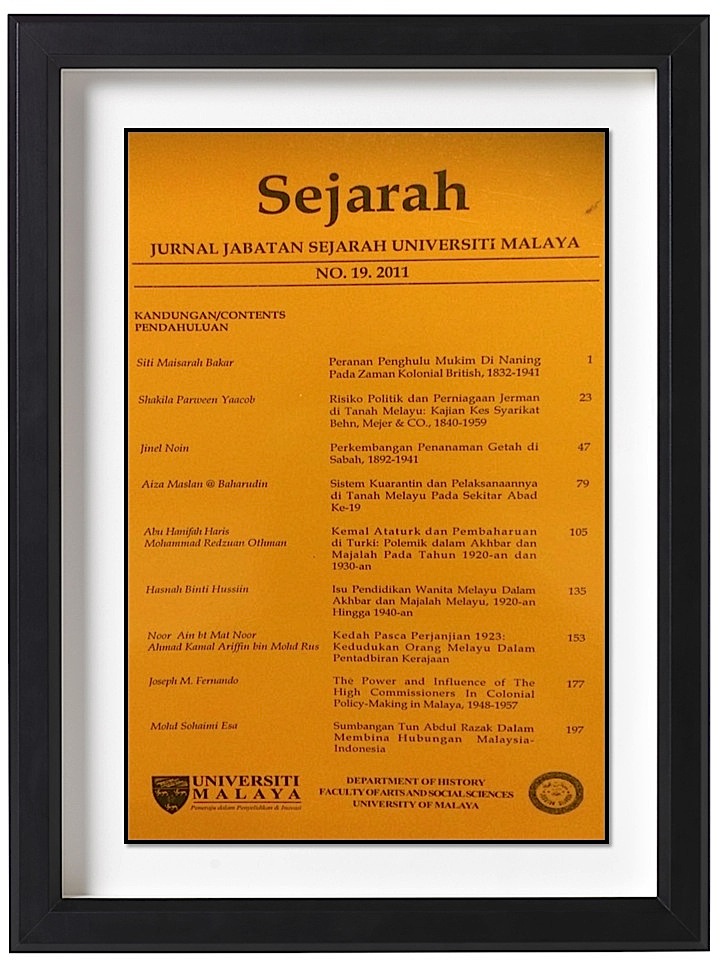PERKEMBANGAN PENANAMAN GETAH DI SABAH, 1892-1941
DOI:
https://doi.org/10.22452/sejarah.vol19no19.3Abstract
This article focuses on the rubber cultivation activities in Sabah before World War II and draws from several sources such as government files and reports, newspapers and books. Generally, the entry of the North Borneo Chartered Company (NBCC) administration in 1881 changed Sabah's economic pattern. Previously the main activities of the local population concentrated economic on self-sufficiency had little interaction with outside world. However, a transformation began to occur when NBCC introduced plantation crops like tobacco, sago, coconut, coffee and rubber. In this article, rubber plantation is given attention because it provided substantial revenue to the country. In the Rubber cultivation activities in Sabah reached an impressive level where it became a major export for the NBCC government. The rubber development in this period showed that it was an important part of the Sabah economic structure. These activities expanded rapidly with the construction of railways where nearby areas were opened for agriculture. In addition, the entry of Chinese and Javanese labour and capital inflows from foreign investors and government policies also saw the rapid growth of the industry.


